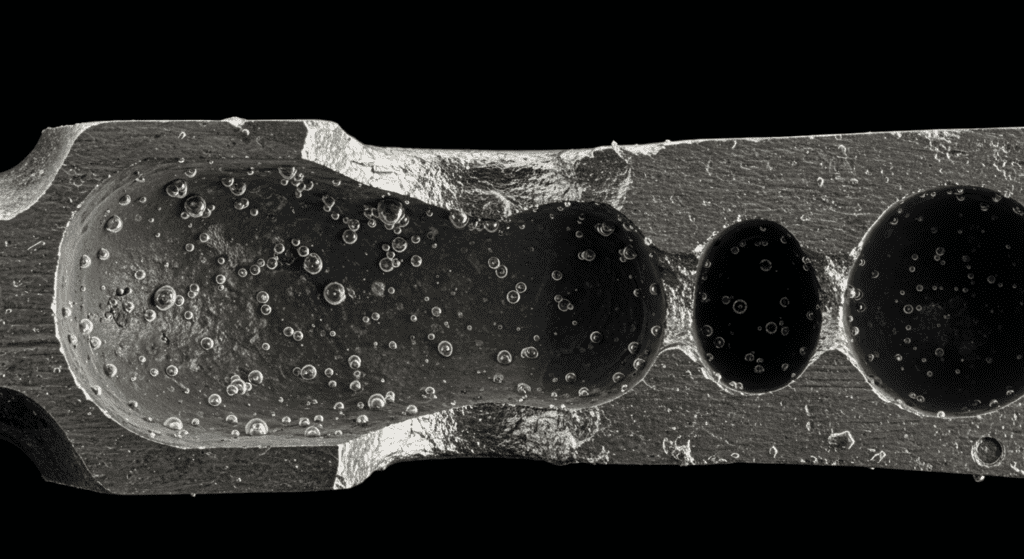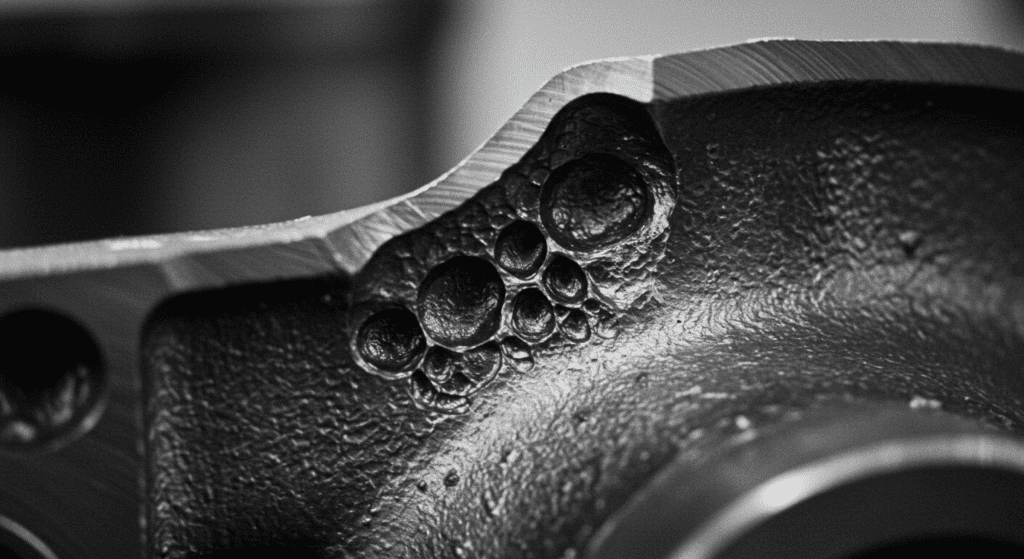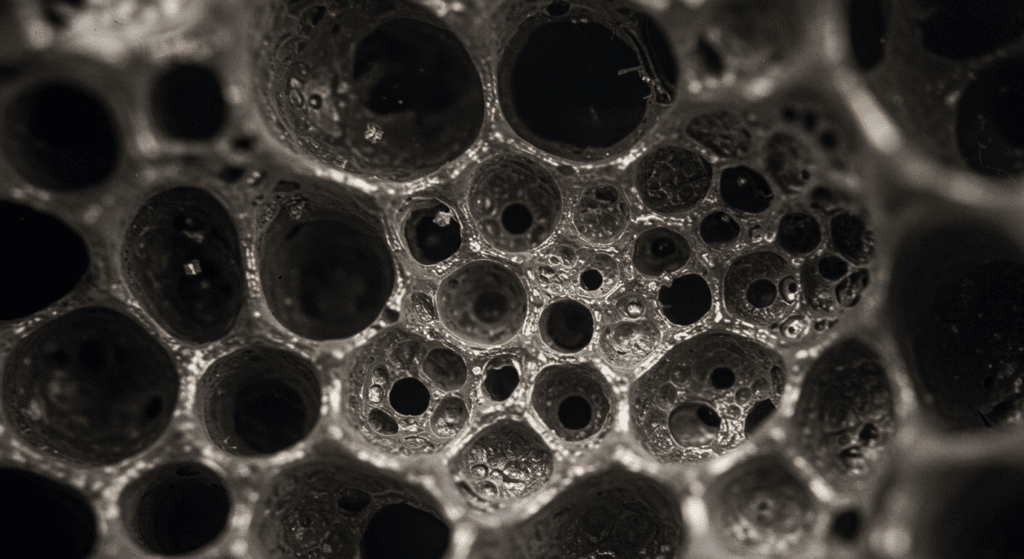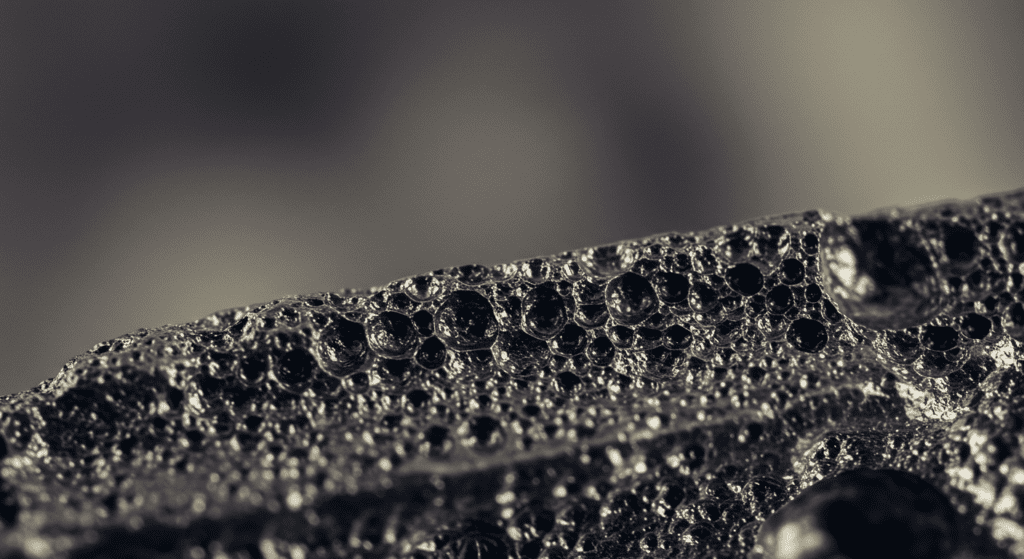Porosity defects are unwanted holes or cavities that form in metal castings, making parts weaker and more likely to fail. In investment casting, porosity is one of the most common problems manufacturers face.
There are three main types of porosity: gas porosity (smooth, round bubbles), shrinkage porosity (jagged, tree-like cavities), and micro-porosity (tiny connected voids). Each type has different causes and needs different solutions.
Gas porosity creates round bubbles that look like pinholes or blowholes in the metal. These bubbles form when gases trapped in liquid metal can’t escape during cooling.
The main cause is hydrogen gas from moisture. When water vapor contacts hot metal, it breaks down into hydrogen. As the metal cools, this hydrogen forms bubbles because cold metal can’t hold as much gas as hot metal.
Other gas sources include:

The best way to stop gas hole porosity is to remove moisture and gases before casting. Heat and dry the ceramic mold thoroughly to drive off all water. This simple step prevents most hydrogen problems.
Use vacuum melting or argon gas shielding to protect the metal from air. These methods remove dissolved gases and prevent new ones from entering. Adding special flux chemicals also helps pull hydrogen out of the melt.
Pour the metal slowly and smoothly to avoid trapping air bubbles. Bottom-filling molds work better than top-pouring because they create less turbulence. Keep your metal clean and avoid contaminated scrap that might contain moisture or oils.
Shrinkage porosity looks like rough, angular holes or pipes inside the casting. This casting shrinkage happens because metal takes up less space when solid than when liquid – typically shrinking 3-7% by volume.
These defects form in thick sections that cool last. When surrounding metal solidifies first, it cuts off the liquid metal supply to these areas. Without fresh metal to fill the space, cavities form as the remaining liquid shrinks.
Common causes include:

Good design prevents most solidification shrinkage. Add gates and risers that stay liquid longer than the casting, providing a path for fresh metal to flow in. Place these feeders near thick sections that need the most metal.
Use chills (metal inserts) to speed cooling in thick areas. This forces directional solidification from the casting toward the feeders. Insulating pads on thin sections can slow their cooling, giving thick areas more time to solidify properly.
Include proper shrinkage allowance in your design – typically 1-2% extra size in thick sections. Smooth out sharp corners with large radii to avoid sudden thickness changes.
Micro-porosity creates networks of tiny voids you can only see under a microscope. This internal porosity forms between metal crystals (dendrites) during the final stages of freezing.
Wide-freezing-range alloys are most prone to this defect. As dendrites grow, they trap small pockets of liquid metal. This trapped liquid can’t feed the shrinkage happening around it, creating countless tiny cavities.
High-alloy steels and superalloys often show micro-porosity because they solidify over a wide temperature range. Fast cooling makes it worse by giving less time for liquid metal to flow between dendrites.

Slow down cooling to give liquid metal more time to feed shrinking areas. Lower pouring temperatures help, but only by 50-100°F to avoid other problems. Pressure casting squeezes some pores closed during solidification.
Hot isostatic pressing (HIP) after casting is the most effective fix. This process uses high temperature and pressure to collapse internal voids.
Choose alloys with narrow freezing ranges when possible. Add grain refiners to create smaller, more uniform crystals that reduce micro-porosity between them.
Surface porosity appears as small pits on the casting surface. Poor mold coatings or oxide inclusions often cause these defects. Use clean metal and proper fluxing to remove oxides before pouring.
Reaction porosity happens when the metal chemically reacts with the mold. This creates gases right at the metal-mold interface. Choose mold materials that won’t react with your specific alloy.

Casting porosity weakens parts and causes failures, but understanding each type helps prevent it. Gas porosity needs moisture control and proper venting. Shrinkage porosity requires good feeding design. Micro-porosity needs controlled cooling or post-casting treatment. With proper techniques, you can produce sound castings with minimal porosity defects.
